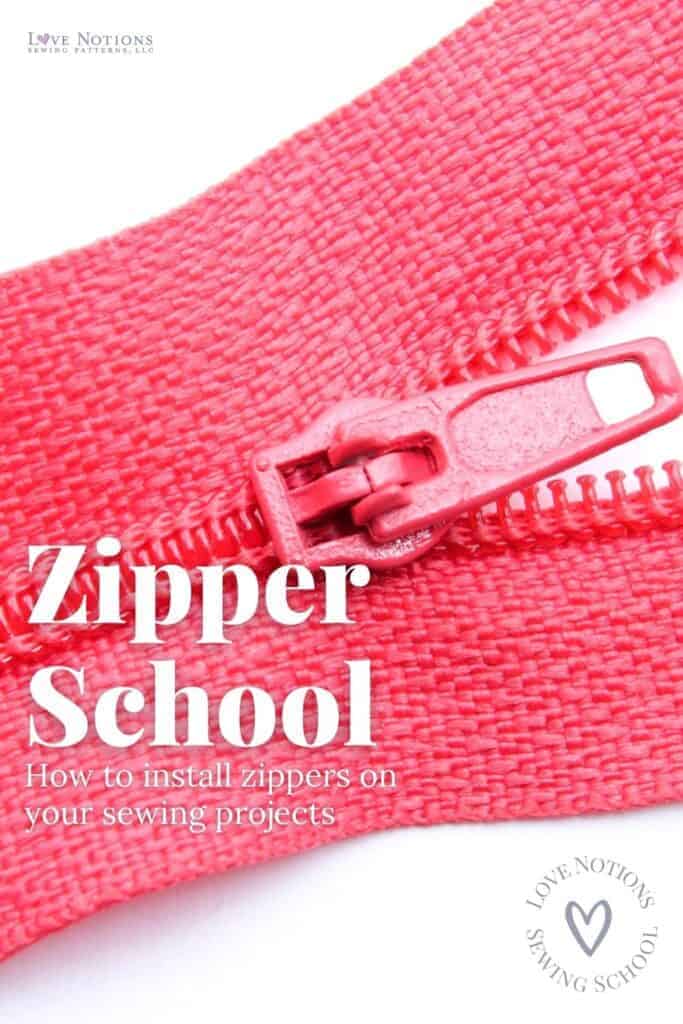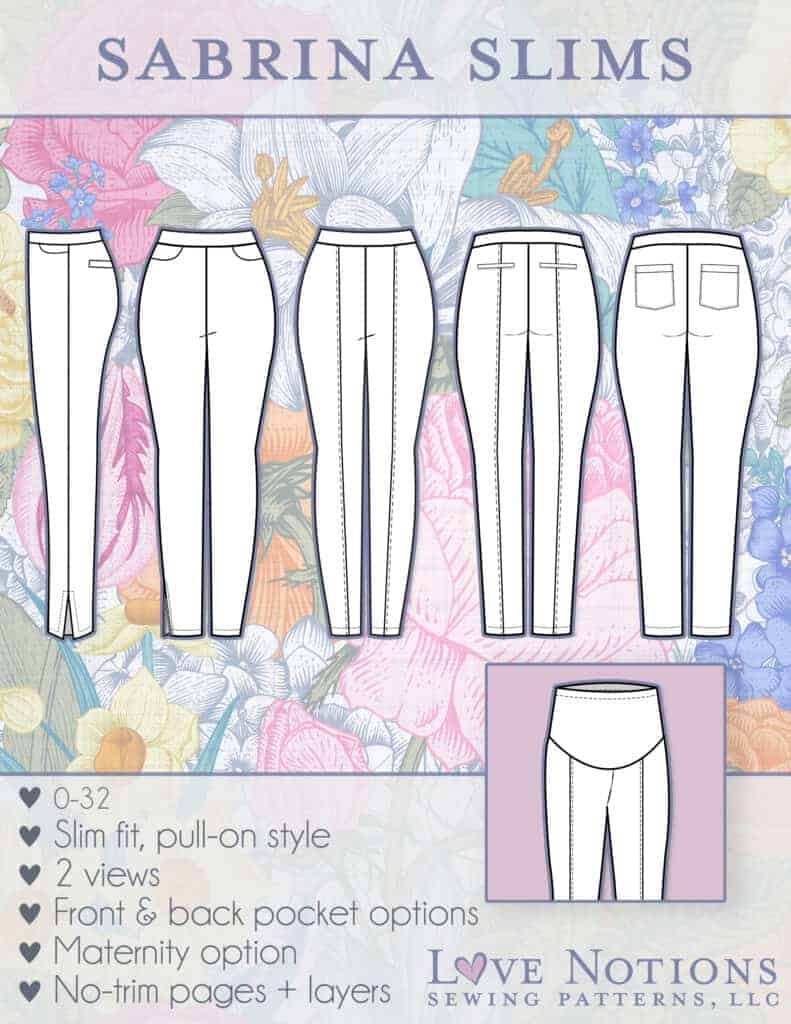Sewing School: The Zipper
Hi lovely people, Josie here, and I am happy to bring to you today’s sewing school which is all about zippers. You either love them or hate them, I am almost sure there is no middle ground with them. For the longest time, I used to shy away from them until I could not run anymore and I faced my fears. Both this week’s Friday Feature patterns come with a zipper feature and I will share with you all you need to know about zippers and how to sew them.

The Sabrina Slims are paired with the Metra blazer.
Sabrina Slims and Maxxine Pants are made for zippers
The Sabrina Slims and the Maxxine are this week’s Feature Friday Patterns. Each of these patterns is on sale for $5 for today only. I have used my affiliate links in this post. This only means that any purchases made using the links earn me a commission that goes to support my sewing. And this comes at no extra cost to you.
Zipper Anatomy
I thought I would be a bit geeky and start by showing you the structure or anatomy of a zipper.

Types of Zippers
There are a few types of zippers commonly used in the garment industry; however, not many of these are used by the home sewist. I thought we would benefit from knowing about the various types of zippers there are.
- Closed-end is the msot common type.
- Open-end also known as separator, commonly used on jackets and hoodies.
- Two-way separator often used on jackets.
- Zippers with double sliders (C) – arranged in head-to-head relation. These zippers are often used on travel bags or suitcases.
- Zippers with double sliders (CX) – arranged in bottom-to-bottom relations.
Open-end (Separating) and Closed-end Zippers
These are the commonest types of zippers used by the home sewers or sewists. The open-ended zipper separates and is typically used on jackets, coats, and hoodies whereas the closed-ended zipper has a bar or a bottom stopper that keeps the zipper in one piece. The closed-ended zippers are the typical zippers used in most of the garments we wear and sew. These are further categorised into regular and invisible zippers.

Regular and Invisible Zippers
Regular Zippers
The regular zippers’ teeth come in three main types: coil, molded plastic and metal.
- Coil Zippers – are made of spiral plastic elements, such as polyester or nylon. These are the most popular zippers among the three. They are versatile and can be used in anything from garments, home furnishing to luggage.
- Metal zippers – are the oldest type of zippers. They come in various metals such as golden brass, nickel, aluminum, and manganese. These zippers are suitable for thick fabric such as jeans, leather jackets, and bags.
- Molded Zippers – these have the teeth molded and melted directly onto the zipper tape. These are quite cheap to produce and are a more cost-effective option. The plastic teeth makes them stiffer than the coil zippers and are popular in children’s clothing, hoodies, tote style bags and more.
Invisible zippers
This type of zippers has its teeth invisible, as the name suggests, when sewn in a garment except for its narrow pull. The teeth are only visible at the back. They are often used on the back of dresses and the side seams of more fitted clothes such as dresses, skirts, and pants. If well inserted, it will seem like there is no zipper but just a mere seam. These are inserted using an Invisible zipper foot although a regular zipper foot could also be used.
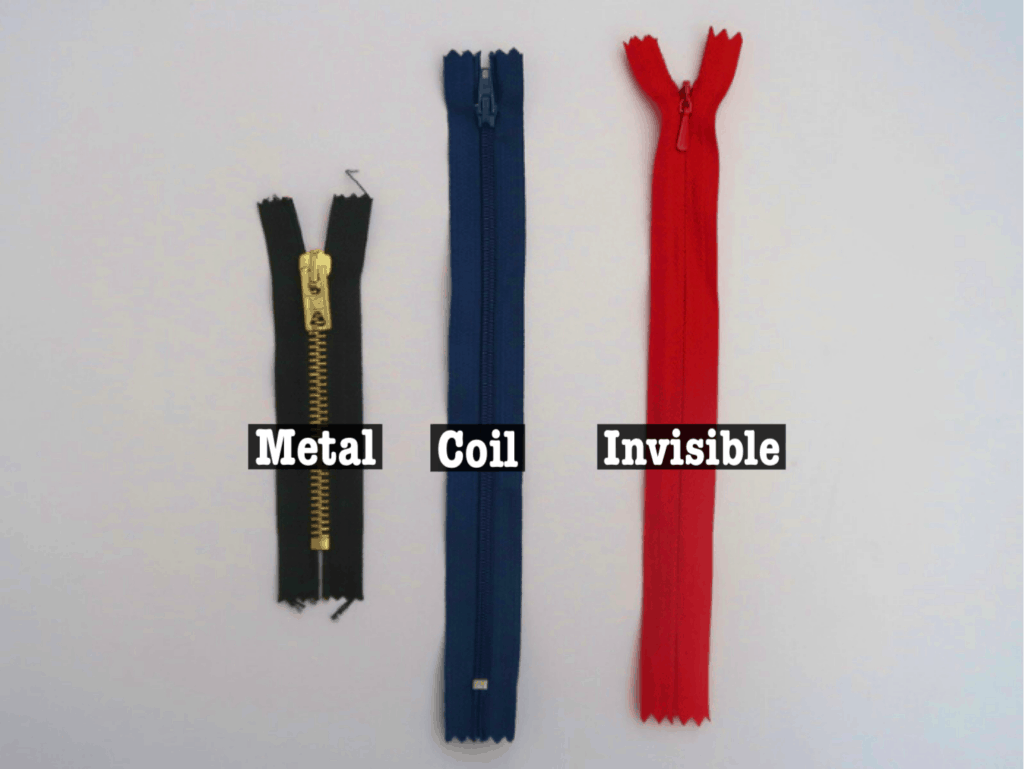
Tools Needed for Zippers
Regular zipper foot or Invisible zipper foot
A zipper foot is a necessity when sewing zippers because it allows sewing close to the zipper teeth. There are two types of zipper feet: a regular zipper foot and an invisible zipper foot. The regular zipper foot can sew all kinds of zippers whereas the invisible zipper foot, as you may have guessed, can only be used on invisible zippers. You should not try sewing a zipper with a universal foot because it pushes the zipper teeth away from the needle. And it is also a recipe for frustrations.

Double-sided quilter’s tape (Optional)
This is my ‘holy grail’ when sewing zippers. It is often used for quilting but cheap and generic brands are stocked in many haberdasheries. It is not a necessity but it makes the sewing process a breeze. It holds the zipper in place while sewing without the need for pins which oftentimes get in the way.
How to sew a zipper

- Step 1 – Apply Interfacing to stabilize the area where the zipper will be attached and follow the steps shown in the instructions which come with the pattern chosen.
- Step 2 – Apply the double-sided tape to the zipper tape
- Step 3 – Remove the tape backing and attach it to the pants as shown.
- Step 4 – Sew the zipper using a regular zipper foot from the right side of the fabric.
Maxxine Pants and Skirts
The Maxx-ine pattern is a girls’ pattern that comes in slim-fit pants and a simple, straight skirt. It is made for stable, medium to heavyweight knits and stretch wovens. The pants feature slash hip pockets, back pockets, and a wide elastic waistband. They both come with a side zipper hem option which is an attractive feature.
I made the full-length pants version with side zippers in size 8 using French Terry fabric.
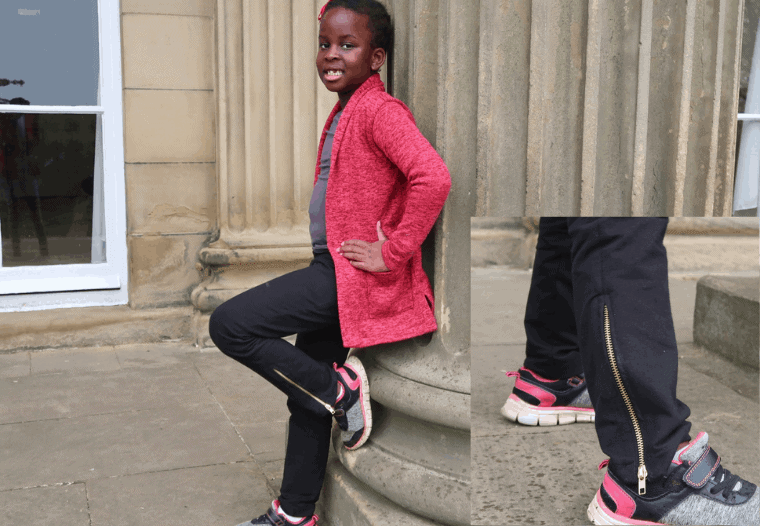
The Maxxine pants are paired with the Boyfriend cardigan for girls.
Sabrina Slims
The Sabrina Slims are a classic style pair of pants with a wide, contoured waistband that sits at the natural waist. These pants come with optional welt pockets, back patch pockets, split hem, zipper hem, and center front and back seaming. These pants are drafted for stretch wovens and stable knits.

These Sabrina Slims feature a split hem and have been paired with the newly released Ballad blouse.
I sewed up two pairs of the Sabrina slims in size 4 throughout using Cotton Sateen fabric. I made a few alterations to this pattern and the Pants fitting workbook that comes with the pattern held my hand throughout. I would not have achieved this fit without that workbook. I also sewed up both pairs with the back patch pockets.
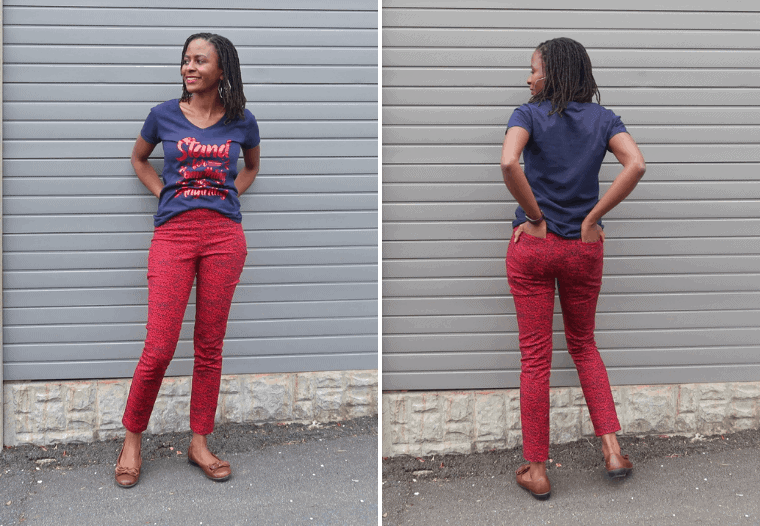
I hope I have de-mystified sewing zippers for you and also inspired you to pick up one of these patterns during the sale. It does not get any cheaper than $5. Having owned the Sabrina Slims pattern for two years and fearing to tackle pants fitting, I am glad this is another fear I have overcome. Which is your fear — fitting pants or sewing zippers?
Thank you for stopping by! Until next time,
Josie
More on Zippers and Sabrina Slims
Love That Look: Sabrina Maxx + Strappy LDT
How to add an invisible zipper to the Sabrina Slims
How to make a Welt Zipper Pocket
Pin this post to your Sewing board on Pinterest
